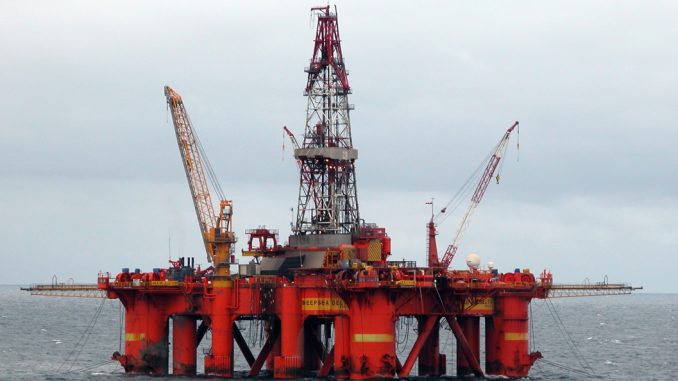
The North Sea and its collection of oil rigs, wells and pipelines have been producing huge amounts of gas and oil for the United Kingdom since the 1970s.
Now though the North Sea oil industry faces significant challenges. Since demand peaked in 2000, production has been slowly declining and much of the infrastructure will require decommissioning over the next 30 years after over half a century at sea. The estimated bill for decommission stood at £30 billion in 2013.
In terms of pipes in the North Sea, there are over 2,500 different pipelines totalling a length of 28,000 miles that need to be dealt with. Decommissioning such a network is a mammoth task that needs to be done as safely as possible.
Here are the five pipeline decommissioning methods which are most likely to be deployed to solve the North Sea problem between now and 2050.
Minimal Intervention
North Sea oil pipelines which were trenched or buried at installation or have become buried over at least half of their lifetime can be left in place once they are taken out of service. This process of decommissioning is known as minimal intervention.
Pipelines must be in good structural condition to undergo minimal intervention. They are thoroughly cleaned and then opened at either end, allowing seawater to fill them. In effect, they become part of the North Sea itself and may even self-bury fully over time.
Minor Intervention
Buried pipelines which could present a hazard to other sea users undergo a decommissioning process known as minor intervention. In addition to the treatment used in minimal intervention, certain sections of pipe may be cut away and removed by a specialist ship, deliberately sunk or trenched.
Scoured sections or those which have formed spans are removed as part of minor intervention, as are sections which lie on the seabed between the trench and the location of subsea structure.
Major Intervention
For North Sea oil pipelines which were originally installed on the seabed or were once buried but are now exposed because of interventions, pipeline strengthening applications or pipe repair made during the pipeline’s lifetime, significant intervention is required for decommissioning.
The pipeline undergoes a major cleaning process with the removal of the tie-in connections at each end. The entire pipeline if possible or at the very least major sections of it are then trenched below the surrounding seabed to a depth of at least 0.6 metres. If burying certain sections of the pipeline is not a viable option, then parts of it can be removed.
The three methods of intervention remain the most popular way of decommissioning pipelines because of their low cost and relatively simplicity.
As we are about to find out, removal is a complex undertaking of engineering which most energy companies are keen to avoid.
Pipeline Removal
The removal of smaller pipelines which are on the seabed can be straightforward. Unfortunately, the majority of North Sea Oil pipelines are major structures.
To remove them from the positions they have occupied either on the seabed or trenched requires complicated methods with new ways of doing so being invented frequently.
Cut and Lift Removal
Cut and lift does exactly what it says on the tin and is the easiest method of pipeline removal. Divers are sent down or specialist remote controlled machinery used to cut the pipe into sections and those sections are then recovered using a crane and a vessel.
This type of removal is effective on all types of pipe, both buried and those on the seabed, and it is the technique used when sections are to be removed in major intervention and minor intervention.
It is however time-consuming. Cutting away and then recovering piece by piece a small pipeline is one thing; to do so for a pipeline running for hundreds of miles is a long process, which is why new techniques are being sought to avoid cut and lift.
There is also a greater risk to those carrying out the operation, especially divers. Faster, safer methods of decommissioning North Sea oil pipelines are therefore required.
Reverse Installation
Reverse installation involves removing pipelines in the opposite way to how they were installed. It enables an entire line to be removed without the need for cutting it into individual sections, greatly speeding up the process and posing less of a risk to these teams carrying out the removal.
Most North Sea oil pipelines less than 16 inches in diameter and not concrete coated were installed using a process called reeling. The pipeline is fabricated onshore and reeled around a large steel drum and onto a specialist ship which takes it out to the sea.
The end of the pipeline is then anchored in placed and the pipe unreeled as the ship follows the proposed route of the pipeline. The pipe is straightened as it is deployed, sometimes over great distances – one North Sea pipeline was installed over 41 miles using reeling.
Reversing the reeling process involves the pipeline being wound back onto a steel drum and taking it away to be recycled. Usefully, pipelines which undergo reeling can sometimes maintain enough structural integrity to be redeployed.

Leave a Reply